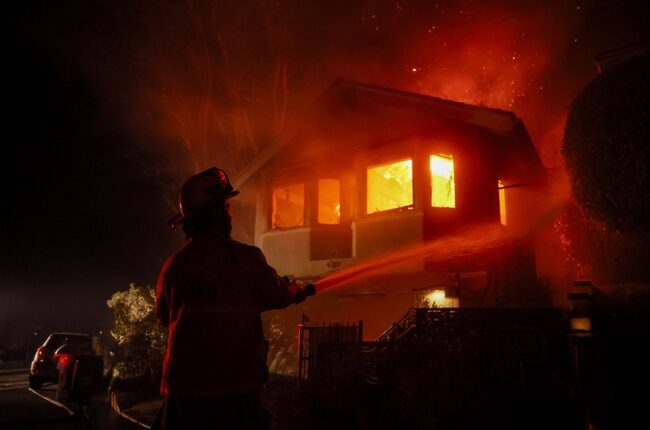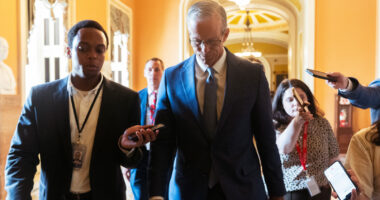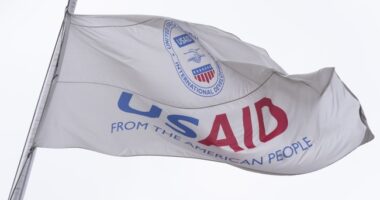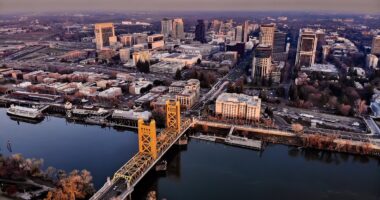
The Palisades Fire in Southern California has burned 19,978 acres in Malibu and Pacific Palisades, and authorities have reported that it is currently eight percent contained. Firefighters are working hard to control the fire while experts are evaluating the extent of the damage caused.
In a stroke of luck, the Getty Villa has emerged unscathed from the fire. Despite the intense flames that swept through the area, the historic buildings and all the valuable paintings, artifacts, and treasures housed within the museum have remained undamaged.
Constructed by the wealthy oil magnate J. Paul Getty, the Getty Villa serves as a sanctuary for numerous ancient artifacts and artworks. When the Palisades fire approached rapidly on Tuesday morning, the museum swiftly activated its emergency response center at 10:40 a.m. The flames were visible from the property less than an hour later, and by 12:27 p.m., they had reached the museum’s grounds.
Fast-moving, wildly unpredictable and catastrophic in the damage it caused along a vast swath of prime coastline, the Palisades fire ultimately spared the Villa and its more than 44,000 objects, including many Roman, Greek and Etruscan relics dating from 6500 BC to AD 400.
Because the Getty Trust is self-funded and has its tentacles into every aspect of California life, they get to do whatever they want. And what they wanted was to ensure their investments did not go up in flames, particularly due to the regular drought conditions of the state on top of the lame fire management and fleecing of fire funding by both Los Angeles Mayor Karen Bass and Governor Gavin Newsom.
The J. Paul Getty Trust’s President and Chief Executive, Katherine E. Fleming, was the mastermind behind their disaster preparedness. Fleming discussed in detail how they prepared and worked with precision to ensure their treasuries were saved and maintained. The foundation of the plan: good, old-fashioned Fire Science. The Trust also employed these fire prevention measures on a consistent and regular basis.
“We did get lucky in some ways, and people were rushing around,” Fleming said in an interview Wednesday evening after the most immediate danger had passed. “But there were also a lot of people who were really thoughtful about this over a long period of time, and I think that clearly paid off for us.”
Two things: thought and time. Our own Larry O’Connor, who was a Los Angeles resident for a long time, discussed on his podcast how the powers that be who are supposed to craft the plans to protect infrastructure and people against fire danger tend to think only in singular projects rather than covering all the bases. They also go for quick fixes rather than long-term measures and maintenance. It appears that Fleming and her team took the big-picture approach, and they definitely took the time to get it done. The first simple tool in fire mitigation is fuel management: reducing flammable vegetation, thinning the tops of trees to prevent fires from leaping across, and removing dead wood and debris. Fleming was on it, like white on rice.
So I live right near the Getty Center, not the Getty Villa, but I’ve always been completely fascinated by how the trust takes care of their properties to ensure they preserve the art they display – they are the safest place to be in a fire. https://t.co/gwDA1GXct0
— Avens O’Brien (@avensobrien) January 9, 2025
Extensive brush-clearing over the last year, Fleming said, had been completed with the knowledge that fire is a way of life in Los Angeles, and that the region’s frequent periods of drought made a massively destructive fire inevitable. The museum had already pruned landscaping that might catch fire and made sure tree canopies were high off the ground. Low-lying brush had been significantly thinned. The grounds were irrigated Tuesday morning.
Another fire mitigation tool: Firebreaks and vegetation gaps. These could be naturally occurring features or man-made features that allow a fire to be stopped. Also, building and infrastructure design can make a difference. I have been to both of the museum’s campuses, and they are impeccably designed and structured, not just for beauty, but to incorporate these two tools.
And Fleming employed one of the most vital tools: Emergency planning. The Trust’s emergency response procedures were strategically thought out and well-timed.
When the Palisades Fire erupted on Tuesday, Fleming and the small team between the Getty Center (10 miles away in Brentwood) and the Getty Villa followed a set of procedures and employed advanced communications to ensure the treasures and the buildings remained unaffected by the fire. Many people on social media (including me) saw images of flames circling the structure on Pacific Coast Highway by the Getty Villa sign. The structure that was burning was not the museum — it was the Villa de Leon, a 35-room Italian Revival mansion that has no affiliation.
Wildfires occur, and climate change has nothing to do with their spread. Had Newsom had procedures in place for proper fire management on a consistent basis, and Bass had not cut funding for essential resources the fire department needed to combat wildfires, this disaster might have been less horrific, more structures could have been saved, and the people affected might have suffered less trauma. The Getty Trust employed these simple tools, and both their museums and the things they house are still standing, despite the destruction around them. The Getty Family and Gavin Newsom are as thick as thieves: you would think he would learn this lesson from them.

















